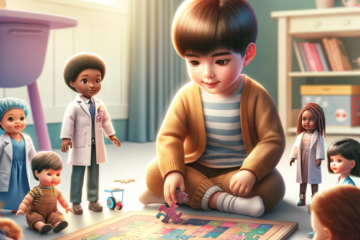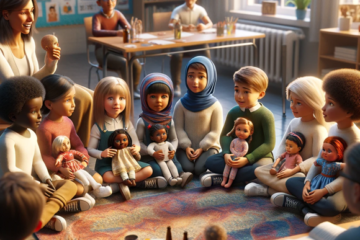In the realm of childhood, toys serve as more than mere playthings. They are windows into imagination, tools for learning, and mirrors reflecting societal values. Among these toys, dolls hold a unique place, serving as companions, role models, and vessels for creative expression. However, the choice of dolls for children is not a trivial matter; it carries profound implications for their development and understanding of the world. In this article, we delve into the responsibility that parents bear in selecting dolls for their children, recognizing the impact it has on shaping perceptions, values, and self-identity.
From the earliest stages of childhood, dolls play a significant role in shaping how children perceive themselves and others. For many, dolls are the first representations of human figures they encounter outside of their immediate family. Therefore, the selection of dolls can either reinforce or challenge societal norms and stereotypes regarding gender, race, and body image. Parents, as the primary influencers in a child’s life, hold the key to introducing diversity and inclusivity through their choices of dolls.
One crucial aspect of parental responsibility in doll selection is gender representation. Historically, dolls have been heavily gendered, with certain characteristics and roles assigned based on societal expectations. Girls are often offered dolls that emphasize caregiving and domesticity, while boys are encouraged towards action figures and vehicles. However, such rigid categorizations can limit children’s understanding of themselves and others. By consciously choosing dolls that defy gender stereotypes, parents can foster an environment where children feel free to explore a broader range of interests and identities.
Furthermore, racial and cultural diversity in dolls is essential for nurturing children’s understanding of the world’s richness and complexity. Exposing children to dolls of various ethnicities and backgrounds helps cultivate empathy, respect, and appreciation for diversity from an early age. Moreover, it enables children to see themselves reflected in their toys, fostering a sense of belonging and pride in their heritage.
Body image is another critical aspect influenced by the choice of dolls. With societal pressure to conform to unrealistic beauty standards pervasive from a young age, dolls can either reinforce or challenge these notions. Parents must seek out dolls with diverse body types, celebrating the beauty of differences and promoting body positivity. By doing so, they instill in their children a healthy acceptance of various body shapes and sizes, nurturing self-confidence and resilience.
However, the responsibility of parents goes beyond the mere selection of dolls; it also entails fostering meaningful interactions and discussions around them. Engaging in imaginative play with dolls provides opportunities for parents to impart valuable lessons about empathy, compassion, and respect. By encouraging children to explore diverse narratives and perspectives through their dolls, parents nurture critical thinking and open-mindedness.
In conclusion, the choice of dolls for children is a deeply significant aspect of parenting, carrying implications that extend far beyond the realm of play. Parents have a responsibility to select dolls that promote diversity, inclusivity, and positive self-image. By doing so, they contribute to shaping a generation of children who are empathetic, open-minded, and confident in their identities. As we navigate the complex landscape of childhood, let us remember the power of a simple toy to inspire, educate, and shape the future.



0 Comments